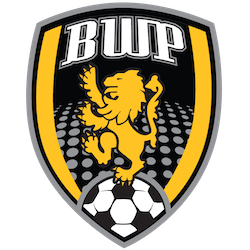What MLS EYD platform’s first wave of expansion means
Charles Boehm
Aug. 5, 2020 | Updated August 6th, 2020
Original Article - (Click Here)
MLS’s new elite youth development platform still doesn’t have a formal name and hasn’t yet finalized the schedule or format of its first season of play – lingering uncertainty caused mainly by the COVID-19 pandemic and its far-reaching effects on North American sports and society.
It does already have its second batch of member clubs, as the league unveiled the 19 newcomers selected in its first application cycle, and a four-tiered system of governance on Tuesday afternoon.
It’s another couple of boxes checked on a substantial to-do list that first landed on the desk of Fred Lipka, the league’s VP, player youth development after MLS stepped in to pick up the slack when U.S. Soccer abruptly shut down the Development Academy in April.
“It’s a logical step, I would say, after first trying to save the house,” Lipka told MLSsoccer.com, an allusion to the scrambling of the past few months to salvage the best parts of the DA, then begin to shape it with an eye towards the future.
“We have been working behind the scenes with all of my department, the player development department, and also – more importantly – all the departments of MLS in New York are a part of this entire project,” he noted, hinting that more announcements will arise later this month. “Everyone is very focused on delivering this platform and everyone is very excited. That's the most impressive thing I’ve experienced over the last few years.”
The committee structures and new member academies are intended to build out the developmental heft and the geographic footprint of the EYDP, to borrow a shorthand working term, and also drive home a message of collaboration that Lipka has stressed since the beginning.
“We would like to be open,” he said. “To get input from all the members. Also, to give ownership to the people which are committed, to offer options, ideas, contradictions, different opinions. Because we think the worst which can happen is to decide about everything without getting input … We are all here to focus on development, and to serve the kids, to serve the dream of the kids.”
The proverbial $10,000 question still lingers: When will games begin? With the extent of the coronavirus’ continued spread across huge swaths of the United States and the patchwork of state and local regulations and restrictions in response to it, it’s still impossible to know for certain. But those operating the league aim to have their part of the equation ready for a potential kickoff on Sept. 12, should it be safe for enough academies to return to match action by that point.
“If,” emphasizes Lipka, “COVID protocols, guidelines from states, guidelines from any relevant authority allow us to play.
“With some states having quarantines, will it be possible to travel across states or not?” he added, pointing out that regionalized schedules are a very real possibility in the near term. “We have different options that we are going to be evaluating. So for now we are building the matrix of options. And we are going to decide about the next few weeks, but there is no rush to make a decision right now because the landscape and the COVID situation is evolving every day.”
Some academies have resumed training; others can barely leave the house. Some states, and Canada, are enforcing quarantines on inter-regional travel. In some northern climates, the window for outdoor play is shrinking by the day. MLS has had to juggle those immediate realities with the long-range vision of a large and productive player production platform.
Another big-picture priority: Tending to younger age groups to expand the “funnel” by which promising talent is identified, cultivated and challenged. The Development Academy grew dramatically in those ages several years ago, then cut back amid fears of over-expansion and dilution. But Lipka sees it as a key area in need of improvement, and many of the new clubs welcomed on Tuesday specialize in these years.
“We want the expansion to be very focused on the youngest ages, U-13, U-14,” he said. “That's why we expanded a lot of clubs – most of the clubs in this space, we are very focused on pre-formation – before high school, U-13, U-14, to have a larger future pool of players to be able to develop, to be able to also maybe influence, recruit. This is an important piece of it, not only adding teams for adding teams.
“The reservoir of players has to be bigger,” Lipka added. “U-12, U-13, U-14, U-15, we need a large bank of teams to feed the pipeline.”
As that suggests, not everyone in the league will compete in all six of the age groups (U-13, U-14, U-15, U-16, U-17 and U-19). Sources tell MLSsoccer.com that several MLS clubs that field USL teams stocked with youth players will not compete in the U-19 division, for example, to reduce redundancy and trim costs.
“We want to give flexibility to our clubs when they have a USL reserve team and some of them play with a lot of [younger] players, to have the capacity to customize and to play the way they want,” said Lipka.
